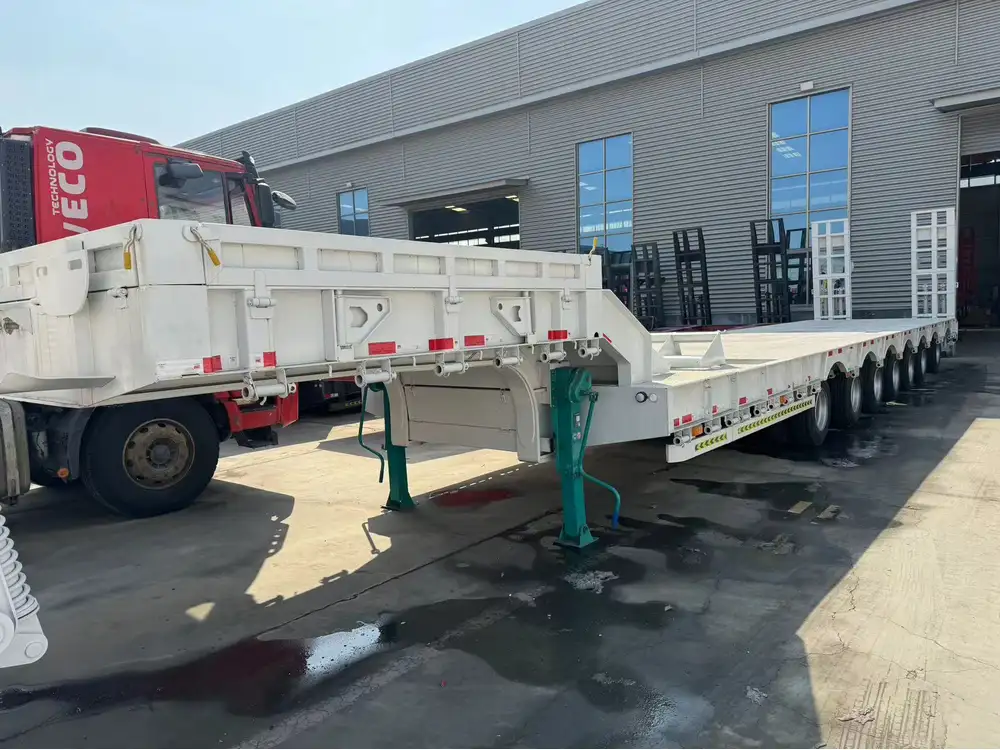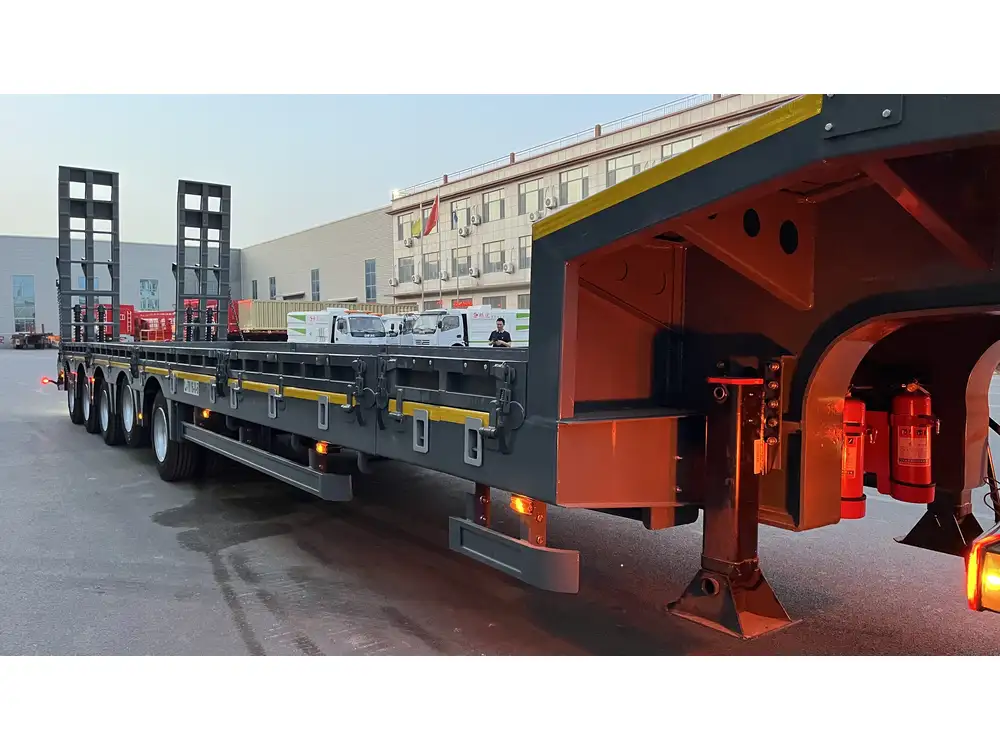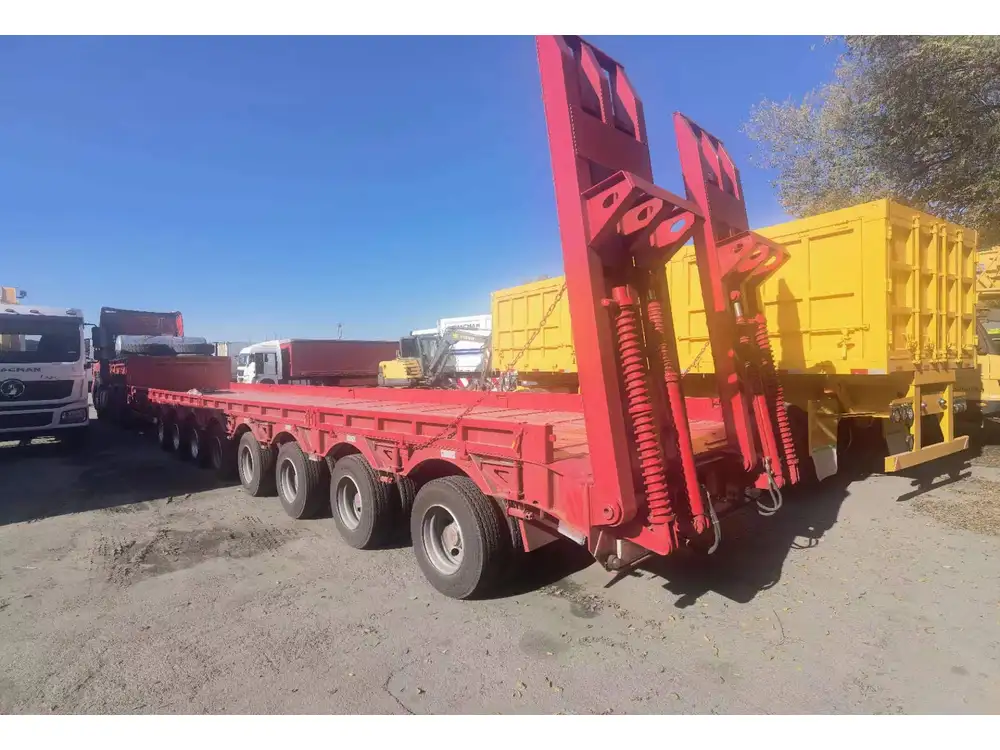Building a soft-sided flatbed trailer can be a gratifying endeavor for those looking to combine the flexibility of a flatbed design with the durability that comes from using soft-sided materials. In this guide, we will delve deep into the nuances of creating your own soft-sided flatbed trailer, from the planning phase to construction and practical tips for effective usage.
Understanding the Structure of Soft-Sided Flatbed Trailers
What is a Soft-Sided Flatbed Trailer?
Soft-sided flatbed trailers are characterized by a flat deck for carrying loads, surrounded by flexible sidewalls, often made from high-strength fabric or vinyl material. These trailers cater to specific needs, offering protection from environmental elements while maintaining easy loading and unloading capabilities.

Advantages of Soft-Sided Trailers
- Lightweight Design: Compared to traditional aluminum or steel trailers, soft-sided options are significantly lighter, improving overall fuel efficiency when towing.
- Increased Flexibility: The fabric sides can adapt to different cargo shapes and sizes, making these trailers versatile solutions for varied transportation needs.
- Cost-Effective: Building a soft-sided trailer can be more affordable than traditional models, particularly if purchased raw materials are chosen wisely.
- Easy Customization: It allows for more creativity in design and functionality to meet specific hauling requirements.
Essential Materials Required
Primary Components
To build a soft-sided flatbed trailer, consider the following materials:
| Material | Purpose |
|---|---|
| Steel Frame | The structural backbone of the trailer. |
| Wood Decking | Provides a solid surface for cargo storage. |
| Fabric or Vinyl | Creates soft sides that provide coverage and protection. |
| Rivets and Screws | Used for securing components together. |
| Axle | Required for mobility and support. |
| Tires | Facilitates trailer movement. |
| Hitch | Connects the trailer to the towing vehicle. |
| Safety Chains | Ensures the trailer remains attached to the vehicle. |

Notable Tools Required
- Welding Machine: For joining metal parts of the frame securely.
- Drill: Essential for creating mounting holes for the decking and other components.
- Screwdriver: Needed for assembly.
- Saw: To cut wood or metal to required sizes.
- Measuring Tape: For accuracy in dimensions.
- Level: Ensures the trailer frame maintains a flat surface.
- Tarps or Upholstery Fabric: To construct the sidewalls.
Step-by-Step Construction Procedures
Step 1: Designing Your Trailer
Before beginning construction, a well-thought-out design is imperative. Draw sketches that define dimensions and layout. Key factors to consider include the intended load size, weight dispersal, and overall structure.

Step 2: Preparing the Trailer Frame
Cut the Steel: Measure and cut your steel beams according to the dimensions of your trailer. A standard size is often 8 feet wide by 12-20 feet long.
Weld Together the Frame: Create the base by welding the beams into a rectangular frame. Ensure a strong and durable construction, as this serves as the core for your trailer.
Attach the Axle: Position and secure the axle at the mid-point of the frame. This is critical as it influences weight distribution and towing characteristics.
Step 3: Constructing the Deck
Prepare the Wooden Planks: Cut wood planks to match the frame’s dimensions. Using pressure-treated lumber can enhance durability against the elements.
Secure the Decking: Fasten the wooden planks tightly onto the frame using screws. This will serve as the solid base to hold loads.
Step 4: Adding the Side Walls
Measure the Fabric: Cut your vinyl or fabric to size, ensuring it covers the desired height of the trailer sides.
Attach the Fabric: Securely attach the fabric to the frame using rivets or screws. It should be taut but flexible enough to handle potential cargo movements.
Reinforce the Corners: Consider double layering or adding additional support at the corners to eliminate any risk of tearing.

Step 5: Finishing Touches
- Add a Hitch: Install a solid hitch at the front of the trailer for connecting to your towing vehicle.
- Safety Chains: Attach safety chains as a precautionary measure against trailer detachment.
- Paint or Seal: Coating the wood or metal will protect against moisture and extend the lifespan of your trailer.
Practical Usage Tips
Load Management
- Even Weight Distribution: Always load heavier items at the center and lighter items toward the ends to maintain balance. This prevents swaying and ensures safer towing.

Maintenance Tips
Regular Check-ups: Inspect the condition of the fabric and frame periodically. Look for signs of wear, especially on high-stress points like corners and attachment sites.
Cleaning: Regularly clean the trailer to prevent dirt buildup that could degrade the material over time.
Safety Considerations
Weight Limit Compliance: Consult local regulations to ensure your trailer adheres to weight limits while loaded.
Brake System: If anticipating heavy loads, consider integrating a brake system to enhance stopping power.
Comparison: Soft-Sided vs. Traditional Trailers
| Feature | Soft-Sided Flatbed | Traditional Trailer |
|---|---|---|
| Weight | Lighter | Heavier due to materials |
| Loading Flexibility | Higher | Standard, based on frame |
| Price | More affordable | Generally higher |
| Durability | Moderate (depends on fabric quality) | High if constructed properly |

FAQ: Common Queries
1. Can I use any fabric for the soft sides?
No, it’s essential to use high-quality, weather-resistant fabric or vinyl. This ensures longevity and durability, catering to varying weather conditions.
2. What is the recommended tongue weight?
A recommended tongue weight is about 10-15% of the total trailer load. This practice improves control and reduces the risk of swaying while transporting.

3. Is a soft-sided flatbed trailer suitable for heavy equipment?
Generally, soft-sided trailers are not recommended for heavy machinery or excessively large loads. Always assess the specifics of the transport need against the trailer’s build and materials.
4. How can I ensure my trailer is roadworthy?
Conduct regular checks, including tire pressure, structural integrity, and functioning lights. Safety should always be a top priority before embarking on any journey.
Conclusion
Building a soft-sided flatbed trailer is indeed a manageable project with the right tools, materials, and planning. By following the structured approach outlined in this guide, you not only create a functional asset that caters to your transportation needs but also gain valuable hands-on experience in trailer construction. Whether you are a hobbyist, a truck enthusiast, or a business owner seeking economical solutions for freight transport, this guide serves as a comprehensive pathway to achieving your goals. Embrace the journey of creating your very own soft-sided flatbed trailer, and enjoy the multifaceted benefits it brings to your operations.



